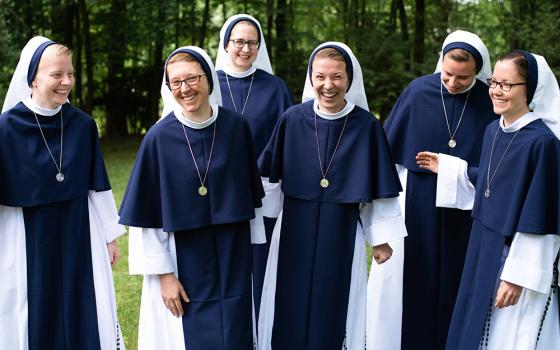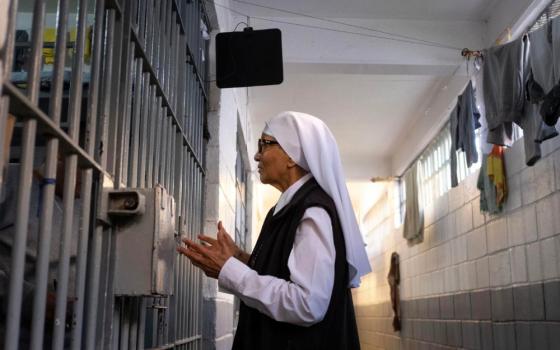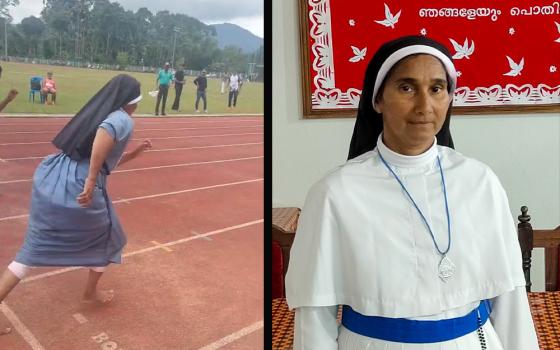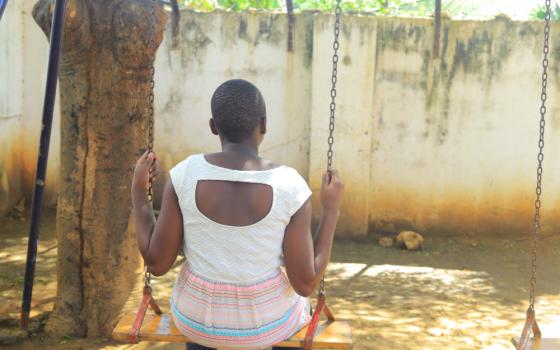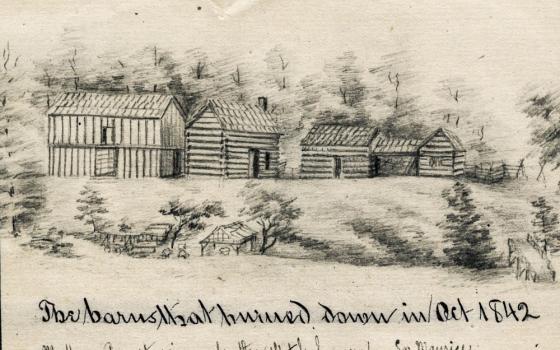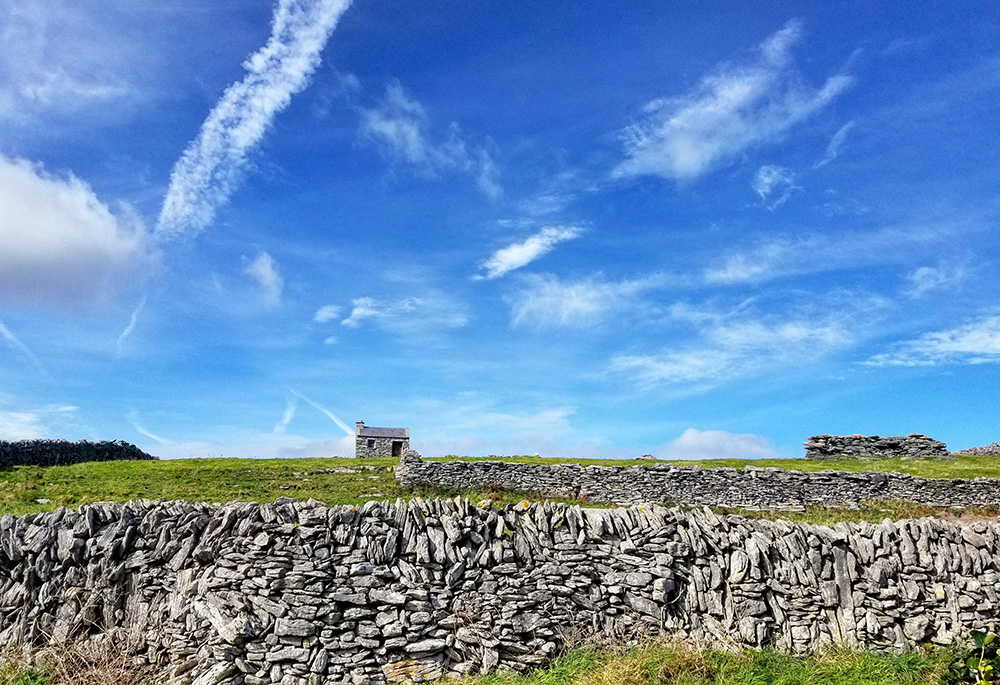
Limestone walls are pictured in a photo taken at the Aran Islands, Ireland (Unsplash/Jessica Knowlden)
"What are you going to do in Aran? You’ll go mad in there on your own. Are you not afraid? It’s dangerous nowadays. Be sure you take plenty of tapes and books."
These are just a sample of the comments thrown at me when I announced my plans to spend three months in the Aran Islands as part of my sabbatical.
In one conversation with two friends, I tried to put a respectable face on my being in Aran by enumerating what seemed like doings — attending Irish class, reading, writing, praying, reflecting on life, walking and cycling. Maura suddenly asked, "But what are you doing, anyway? Did I miss something?"
Mikey came in with his own summing up of what I had just said. "Didn’t you hear her? Nothin'." So much for my being in a world that is geared to produce at all costs at all times.
Why Aran? Well, I liked the location and for some time I wanted to give myself time in neutral ground offshore where I could touch, feel and sense again my own Celtic roots. Maybe a line from T.S. Eliot says it better: "to arrive where we started And know the place for the very first time."
I’m grateful for the many beautiful ways I've been touched by the people of New Zealand and Chile. Now I will immerse myself in the culture that shaped me in my youthful years. At my job, I tend to be overactive, head down and tail up style; now I am reversing the order, with tail down and head up.
The Aran Islands are composed of three islands on the mouth of Galway Bay: Inis Mór, (or Inishmore) population about 800; Inis Meáin (or Inishmaan), population about 200; and Inis Oírr (or Inisheer), population about 300. There is a ferry service every day to and from the islands. I chose Inis Mór, which is about about 7.4 miles long and about 1.8 miles wide, with ancient monuments and seven churches to explore.
I chose to go to Aran for Samhain (Nov. 1, beginning of the Celtic year) — one of the four major dates on the Celtic calendar. Others include: Imbolc (spring, fertility), Bealtaine (beginning of summer), and Lughnasadh (harvest festival).
In her book The Celts, Nora Chadwick explained that at the beginning of the Celtic year, barriers between the natural and supernatural world are lowered. In Aran people believed that on the eve of that day the dead came back to visit their family again. That night some used to dress up for the meeting with their deceased relatives. Hence Christianity later decided to dedicate the month of November to remember our dead.
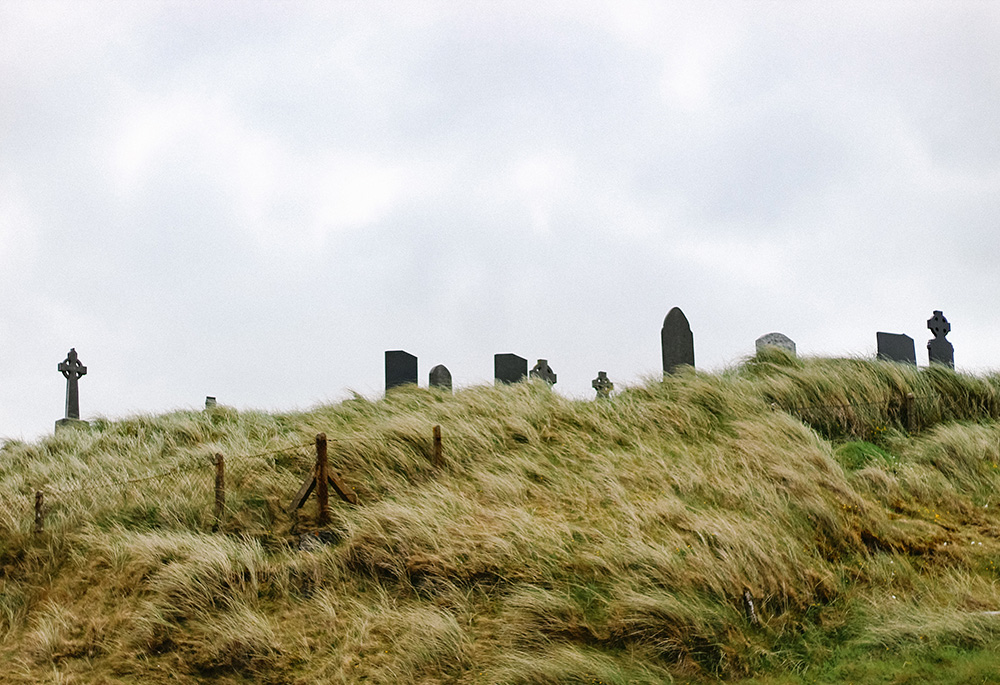
Gravestones in a picture taken at the Aran Islands, in Ireland (Unsplash/Jessica Johnston)
While I was in Aran, a young man disappeared on Nov. 1. It was presumed he was "gone with the dead." Although his family looked for him, he was never found. A sean-nós singer sang the most moving, plaintive melody I’ve ever heard at a liturgy. I felt it deep in the pit of my stomach.
I also learned more about the Celtic way of prayer. It's simple and profound — they pray at every moment, thinking that Christ could come at any time, in the person of a stranger. The custom of putting a candle in the window at Christmas to welcome the stranger is thought to have originated in Ireland, and contributed to the great tradition of hospitality in Ireland.
I also love St Patrick's Breastplate — probably written years after his death. It is essentially a prayer for God’s protection against everyday dangers:
Christ with me, Christ before me,
Christ behind me, Christ beneath me, Christ above me,
Christ on my right, Christ on my left
Christ when I lie down, Christ when I sit, Christ when I stand,
Christ in the heart of every one who thinks of me
Christ in the mouth of everyone who speaks of me,
Christ in every eye that sees me, Christ in every ear that hears me.
in Chapter 2 of her book A World Made Whole Esther de Waal gives examples of Celtic prayers and blessings. Here are some abbreviated examples:
- Kindling the fire: "God kindle in my heart within/A flame of love to my neighbour."
- On lighting the lamp: "May God give us the light and glory of heaven."
- Before making bread, a woman would say "the luck that God put upon the five loaves and two fishes may be put upon this food."
- On milking a cow: "Come Mary and milk my cow."
- After milking, with fingers dipped in milk, she would make the sign of the cross on the cow's stomach to thank her for the milk.
Here are a few that were common in my youth:
- On leaving home: A mother would always give children a blessing. "May God and his blessed mother look after you."
- On entering a neighbor’s house, we would say, "God save all here." "God Bless the work and you too."
I can see clearly how the following prayer spoken by the Indigenous in South America in a gathering before a meal speaks to me. They perform a little ritual before they eat to "Pachamama" offering the first drink and piece of food to Mother Earth, acknowledging her presence, and thanking her for her gifts. This little ritual in all its simplicity has the power to make us mindful in a very practical way of the earth which sustains us.
Advertisement
Now when I look at the spirituality of the Presentation Sisters I immediately see an amazing similarity between the Celtic and our way of aspiring to live out our spirituality for example:
We are conscious of our interconnectedness of all that exists and of God’s revelation in all of life. Aware of our Kinship with all creation, we journey “with eager longing” towards our transformation in Christ. We add our voices to those who work for healthier eco- systems and a healthier planet, knowing that where Earth is most exploited, those made poor suffer most (From "Our Way of Life — Constitutions of The Union of Sisters of the Presentation of the Blessed Virgin Mary," C8).
I think a new wave of Celtic spirituality is sweeping over the world today. We are being invited to renew this Celtic way of being by prophetic/inspirational writers like Pierre Teilhard de Chardin, Pope Francis and John Philip Newell when they urge us to reverence our shared universe with its myriad inhabitants.
Celtic spirituality seems to have always recognized the presence of God in nature. Over 100 years ago the poet Joseph Mary Plunkett called on us to recognize the presence of God in nature, in his beautiful poem:
I see his blood upon the rose
And in the stars the glory of his eyes,
His body gleams amid eternal snows,
His tears fall from the skies.
I see his face in every flower;
The thunder and the singing of the birds
Are but his voice — and carven by his power
Rocks are his written words. All pathways by his feet are worn,
His strong heart stirs the ever-beating sea,
His crown of thorns is twined with every thorn,
His cross is every tree.

